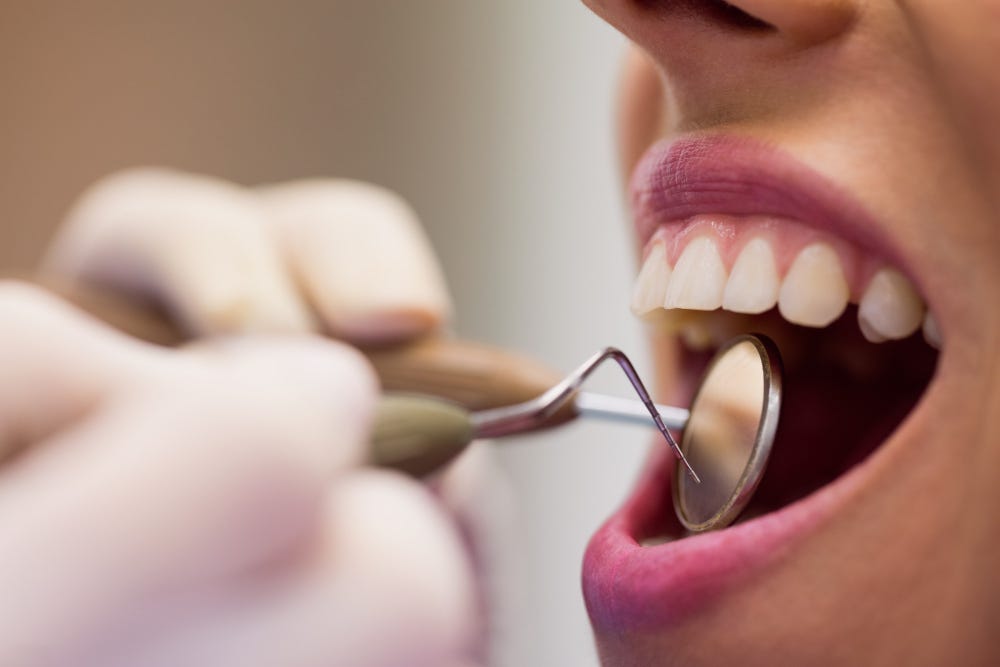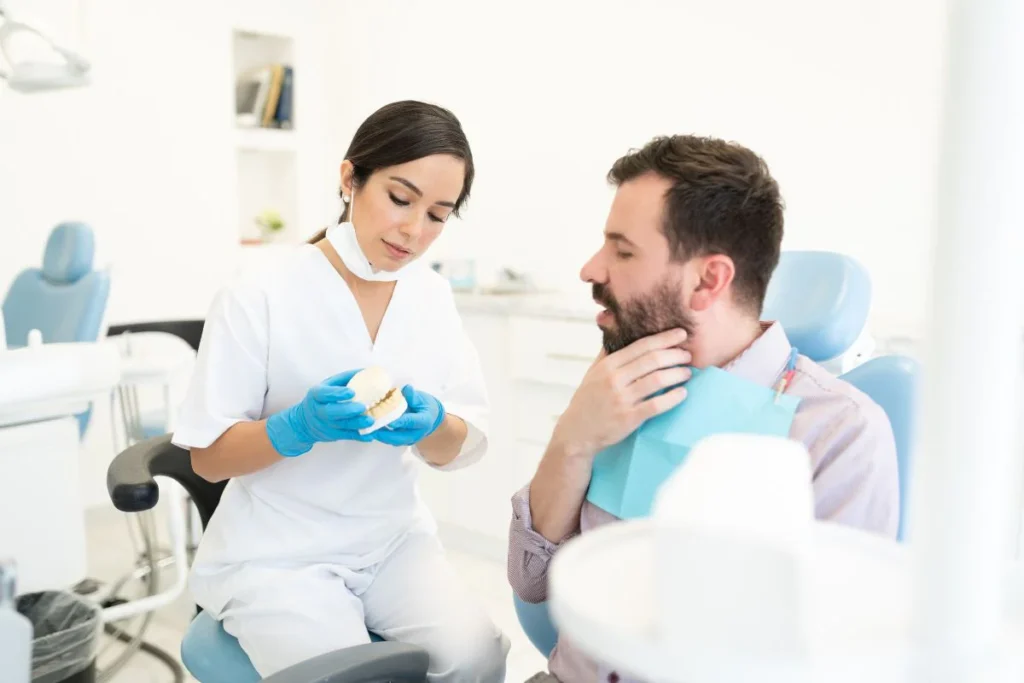If part of your tooth remains after a dental procedure, take immediate action by contacting your dentist to schedule an appointment. Avoid touching the exposed area and rinse your mouth with warm saltwater to maintain cleanliness. Refrain from consuming hard foods that could worsen the situation. Document the issue with pictures if possible, as this may aid your dentist in assessing the problem.
During your appointment, inquire about the remaining tooth fragment, potential risks, and necessary steps for treatment, which may involve an X-ray to evaluate the extent of the issue. Remember, swift professional intervention is crucial to prevent complications and ensure appropriate care for your tooth.
How to address a leftover tooth fragment after a dental procedure?

Following these immediate steps helps in minimizing the risk of complications, maintaining oral hygiene, and preparing for the professional assessment and treatment provided by your dentist.
Contact the dentist or dental clinic
This step is crucial as it initiates the process of addressing the issue promptly. Contacting your dentist allows you to explain the situation and schedule an appointment for further assessment and necessary treatment.
Dental professionals are equipped to evaluate the situation and provide guidance on the appropriate steps to take, potentially including an examination or X-ray to assess the extent of the problem.
Avoid touching the exposed area
Refraining from touching the exposed area with your tongue or fingers is essential to prevent any potential contamination or further damage.
Touching the area might introduce bacteria, increasing the risk of infection or irritation.
Rinse mouth with warm saltwater
Rinsing your mouth with warm salt water helps maintain cleanliness in the affected area.
Saltwater rinses can aid in reducing bacteria and preventing infection. Use a solution of warm water and a teaspoon of salt, swish it around the mouth gently, and then spit it out.
Caution against consuming hard foods
Avoiding hard or crunchy foods is necessary to prevent any discomfort or potential damage to the exposed area. Hard foods could further break or dislodge the remaining tooth fragment or cause pain in the affected area. Opt for softer foods that are easier to chew until you receive further guidance from your dentist.
How to prepare for the dental appointment concerning the remaining tooth fragment?
By documenting the situation with pictures, preparing pertinent questions for your dentist, and discussing potential risks and necessary treatments, you actively engage in your oral care and facilitate a more informed discussion with your dental professional during your appointment.
Documentation! Taking pictures of the affected area:
Capturing images of the affected tooth or area helps in providing visual information to your dentist. This can assist in their assessment before your appointment.
Clear, well-lit images can help your dentist understand the situation better, especially if there’s any discomfort or changes in the area since the procedure.
Questions to ask the dentist regarding the remaining tooth fragment
Inquiring about the remaining tooth fragment is crucial. Ask about its size, location, potential risks associated with leaving it, and the recommended course of action.
Questions could involve the necessity of removing the fragment, the risks of leaving it, and whether extraction or other treatments are necessary to prevent complications.
Potential risks and necessary treatments
Understanding the potential risks associated with the leftover tooth fragment is essential. Your dentist can outline the risks, such as infection, irritation, or potential damage to adjacent teeth or tissues.
Discussing necessary treatments involves understanding the options available to address the issue. This might include extraction of the remaining fragment, potential restoration procedures, or other treatments to ensure oral health and prevent complications.
What makes professional intervention vital for handling a tooth issue post-procedure?

Professional intervention not only addresses the immediate concern but also ensures comprehensive care, reducing the chances of complications and providing the most appropriate treatment to rectify the issue with the tooth fragment.
Preventing complications through timely care
Timely intervention by a dental professional is crucial in preventing potential complications that may arise from a tooth fragment left after a procedure.
Prompt care reduces the risk of infection, discomfort, further damage to surrounding teeth or tissues, and other complications that might occur if the issue is left unaddressed.
Dentist’s assessment and potential X-ray examination
The dentist’s assessment is fundamental in understanding the extent of the problem. They will examine the area, possibly utilizing X-rays or other imaging techniques to get a clearer view.
X-rays help in visualizing the exact position and size of the remaining tooth fragment, enabling the dentist to plan the most appropriate treatment.
Ensuring appropriate treatment for the tooth issue
Professional intervention guarantees that the tooth issue is appropriately addressed. This might involve various treatments, such as the extraction of the remaining fragment, dental restoration procedures, or other interventions depending on the situation.
By seeking a dentist’s expertise, you ensure that the most suitable treatment is administered, minimizing risks and restoring oral health effectively.
FAQ’s
Is it okay if dental files are left inside root canals?
Dental files left inside root canals can cause complications like infection or inflammation.
Can a dentist leave a root in?
In some cases, a dentist might leave a fractured root if attempting to remove it poses a higher risk to adjacent structures.
What happens if the root of a tooth doesn’t come out?
If a tooth’s root doesn’t fully come out during extraction, it can lead to potential infection or discomfort.
Is it OK to leave a root tip?
Leaving a small root tip might be acceptable if removing it risks nerve damage or other complications.
How do dentists remove retained roots?
Dentists may use various techniques, including surgical intervention or specialized instruments, to carefully extract retained roots.
Does removing a root hurt?
With local anesthesia, patients usually experience minimal discomfort during root removal, although some soreness or mild pain afterward is possible.
Final Words
In conclusion, acting quickly when part of a tooth is left after a dental procedure is essential. Contact your dentist right away and avoid touching the area. Rinse your mouth with warm saltwater and be careful with what you eat. Before your dental appointment, take pictures of the affected area and prepare questions for your dentist. Remember, seeking professional help promptly prevents complications and ensures the right treatment for the tooth issue. Trust your dentist to guide you through the best steps to take for proper care of your tooth.

